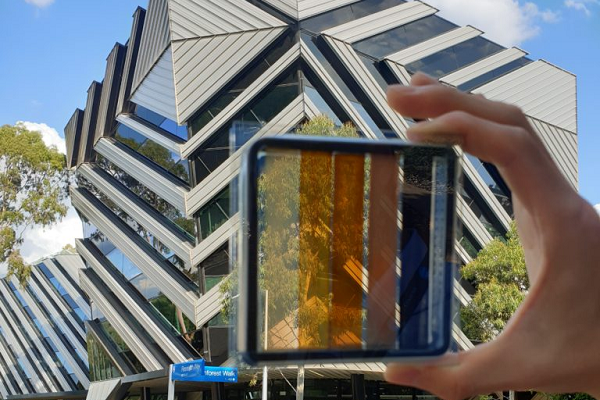Windows will soon generate electricity, following solar cell breakthrough

Two square metres of solar window will soon do the same job as a standard rooftop solar panel according to researchers from ARC Centre of Excellence in Exciton Science (Exciton Science) and Monash University. It’s also supported by the Australian Renewable Energy Agency (ARENA).
A semi-transparent perovskite solar cell with contrasting levels of light transparency can be incorporated into window glass and is a game-changer that could transform architecture, urban planning and electricity generation.
Led by Exciton Science professor Jacek Jasieniak, the researchers are now investigating how the new technology could be built into commercial products with Viridian Glass, Australia’s largest glass manufacturer.
The technology uses an organic semiconductor that can be made into a polymer and used to replace a commonly-used solar cell component (known as Spiro-OMeTAD), which shows very low stability because it develops an unhelpful watery coating and produced encouraging results.
“Rooftop solar has a conversion efficiency of between 15 and 20%,” Jacek says.
“The semi-transparent cells have a conversion efficiency of 17%, while still transmitting more than 10% of the incoming light, so they are right in the zone. It’s long been a dream to have windows that generate electricity, and now that looks possible.”
CSIRO research scientist and co-author Dr Anthony Chesman says the team is now working on scaling up the manufacturing process: “We’ll be looking to develop a large-scale glass manufacturing process that can be easily transferred to industry so manufacturers can readily uptake the technology.”
Jacek does mention that there is a trade-off: the more transparent the cells are, the less energy they can provide so architects will need to take this into consideration.
He added that solar windows tinted to the same degree as current glazed commercial windows would generate about 140W of electricity per m².
